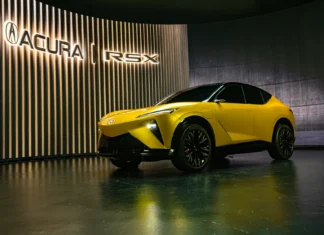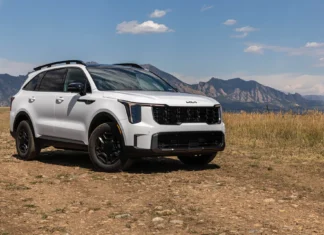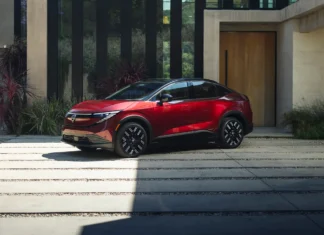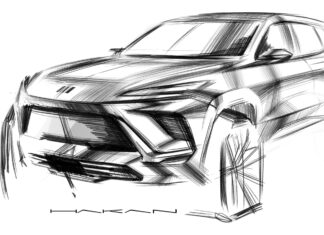The 2025 Honda Civic Hybrid isn’t all about efficiency: It’s torquier than the Si, too.
A few years ago, Honda revived the Insight nameplate for its compact hybrid sedan after discontinuing the old Civic Hybrid a decade ago. The Insight is now gone, and in its place a new Honda Civic Hybrid is back in the cards for the 2025 model year. Honda invited us out to take a look at its latest gas-electric offering, before we actually have the chance to drive it in the next few weeks (stay tuned for that!).
This time around, the Civic Hybrid, based on the eleventh-generation platform, comes in both sedan and hatchback variants. More broadly speaking, the 2025 Civic lineup has gotten a refresh throughout the standard (non-Si and Type R) lineup, including its trim structure. The base LX is still here, but there’s no EX or EX-L. Instead, options above the base model include the Sport — with each gas-only model packing the same 158-horsepower 2.0-liter four-cylinder as before — then the Sport Hybrid and Sport Touring Hybrid.
What’s under the hood?
The 2025 Honda Civic Hybrid basically uses a slightly derated version of the powertrain available in the Accord Hybrid and CR-V Hybrid. To that end, you still get a 2.0-liter Atkinson cycle engine, as well as a pair of electric motors. Combined, the hybrid models put out 200 horsepower and 232 lb-ft of torque, making these the most powerful Civics below the 315-horsepower Type R. The Si, by comparison, puts out 200 horsepower and 192 lb-ft of torque.
While exact EPA figures aren’t available yet, Honda says the new Civic Hybrid will manage “nearly” 50 mpg, which puts it right in line with its chief rival, the Toyota Corolla Hybrid (which gets a combined 47 mpg).
Visual changes for the 2025 Honda Civic Hybrid preview what’s coming with the rest of the lineup, as well. Fundamentally, the eleventh-gen model isn’t changing much, apart from a revised front fascia with a different lower front lip. Hybrid models specifically get color-matched trim pieces beneath the headlights, while Civic sedan models get darker taillights.
Inside, the 2025 Honda Civic Hybrid models get an available gray interior color.
Sport Hybrid models add a dual-zone climate control, a sunroof and heated front seats to the equation, while Sport Touring Hybrid ups the feature list with a 12-speaker Bose stereo system and a larger 9.0-inch infotainment system with Google built-in and wireless Android Auto/Apple CarPlay. The lesser LX, Sport and Sport Hybrid Civics still get a 7.0-inch display as standard fare.
Exact pricing on the 2025 Honda Civic lineup is still in the air, including the Hybrid models. Honda did announce just before this morning’s embargo that the Sport Hybrid will start under $30,000, but it’s unclear exactly how far we’re talking. We should know more before the first sedans arrive in June. If you’re wanting a hatchback Civic Hybrid, you’ll have to wait until a bit later in the summer to pick one up.
Eventually, Honda is aiming for Civic Hybrid models to account for 40% of the sales split in the coming years.










































